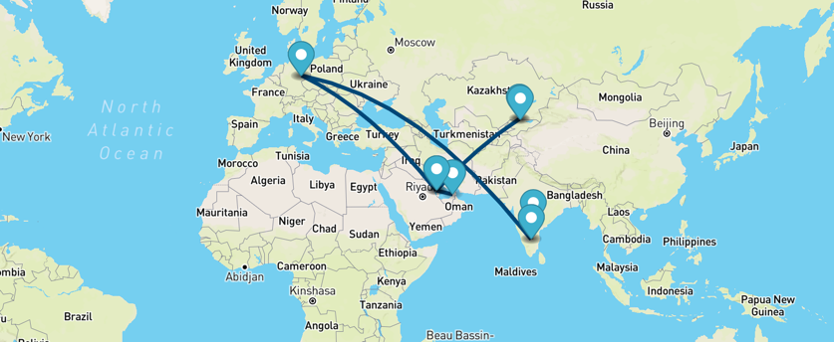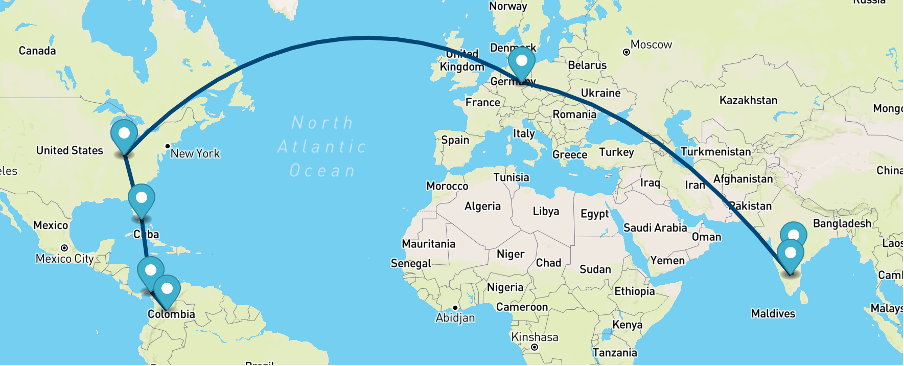Your Marketing Collateral and their CO2 Emissions
When collateral is printed and then transported across countries or even continents, CO2 emissions are generated at a cost to our environment.
But how much CO2 is emitted?
Case Study
To find out we initiated a study where we tracked 527 separate orders to 48 countries.
In total the orders contained 18,129 pieces of education marketing collateral, consisting of 43,700 pages (21,850 pieces of A4 paper), which together weighed 1,613kgs (1.6 tonnes).
Then we used CarbonCare (carboncare.org) to calculate the carbon emissions for each shipment, which we then used to calculate the overall environmental impact.
Results
We found at total of 13,666kgs (13+ tonnes) of CO2 were emitted when transporting this collateral around the world.
Put differently, on average:
- 25.9kgs of CO2 was emitted per order.
- 0.75kgs of CO2 was emitted per piece (item of collateral)
- 150 grams of CO2 was emitted per A4 piece of paper (a piece of paper weights 16 grams).
To put that in perspective, 25kgs looks like this:

Samples
Here are some samples of the orders we tracked:
Hyderabad, India to Bishkek, Kyrgyzstan

Emissions Report:
Kgs Shipped | 3.8kgs |
Kms Travelled | 15,652kms |
Kgs of CO2e emitted | 51.6kgs |
For each 1kg shipped, this much CO2e is emitted | 13.6kgs |
Hyderabad, India to Bogota, Colombia.

Emissions Report:
|
Kgs Shipped |
4.6kgs |
|
Kms Travelled |
19,421kms |
|
Kgs of CO2e emitted |
75.2kgs |
|
For each 1kg shipped, this much CO2e is emitted |
16.35kgs |
Conclusion
While printing collateral in one place and shipping by post or courier to where it will be used is often the most financially cost-effective way, it comes at a significant cost to the environment.
But it doesn’t have to be like that. Using digital printing processes, marketing collateral can be printed in the same city that it will be used, thereby eliminating most of the CO2 emissions associated with air transport.
Sustainable collateral is local collateral.
